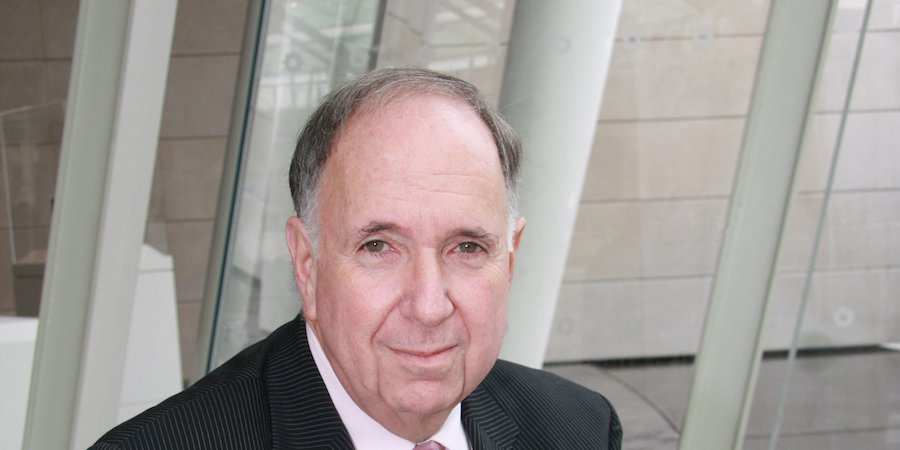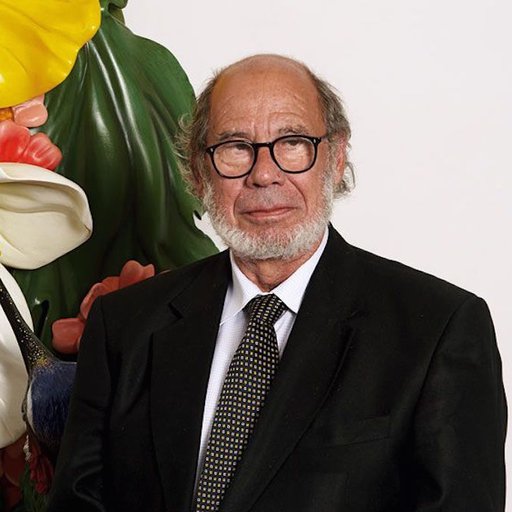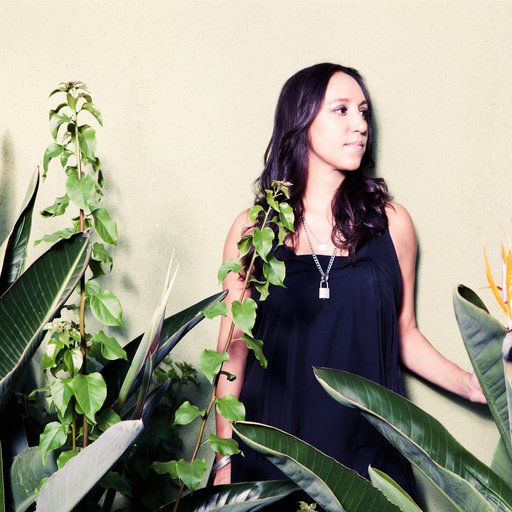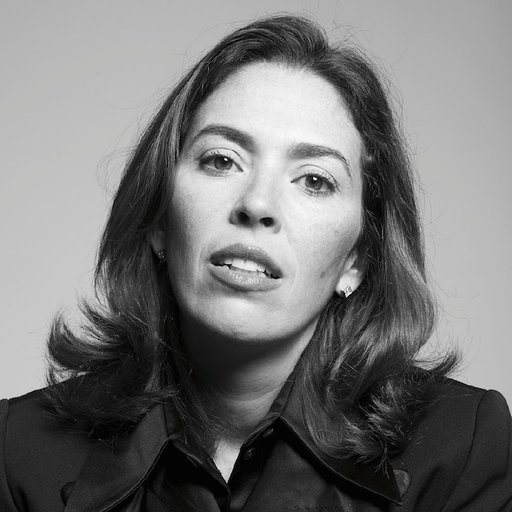When Brooklyn Museum director Arnold Lehman arrived at the institution 17 years ago after nearly two decades of leading the Baltimore Museum of Art, it was a very different place than today’s Brooklyn of a world-class restaurant scene, a Luhring Augustine outpost in Bushwick, and international hipster synonymity. That renaissance across the river is owed at least in part to Lehman, who quickly evolved into one of the chief statesmen of Brooklyn culture, dramatically opening up the museum to a diverse audience, raising its visibility on the international stage, and championing a populist style of exhibitions that drew in vast crowds unmoved by, say, the institution's extraordinary Egyptian art collection, but hungry to learn about "Star Wars" or hip hop. Throughout, the director has been a feisty voice of reason, a world-class kibbitzer, and a committed small-'d' democrat—in other words, exactly what you would expect of someone born in Brooklyn, as he was in 1944.
Now, the next phase of the museum's history is about to commence with a new renovation campaign, Lehman, 70, is stepping down from his post. To survey the manifold ways in which the director helped to radically respape the museum, Artspace editor-in-chief Andrew M. Goldstein spoke to Lehman about how he took a crumbling "startup" institution into the 21st century, the importance of radical inclusiveness in all things, and his curatorial innovations that are now spreading across the museological landscape nationwide.
Related Links:
Expert Eye: Arnold Lehman On The Future Of The Brooklyn Museum
When it comes to the sweeping changes across Brooklyn over the past two decades, you have had a privileged vantage point to experience the borough's evolution. Your tenure at the helm of the museum, one might point out, has been longer than the reign of former borough president Marty Markowitz, Mr. Brooklyn himself. What was the borough like when you arrived at the museum?
When I arrived in 1997, my focus was pretty exclusively on the museum, so I really didn’t have a good sense of what was happening or just starting to happen in the borough. So many things had to be worked through at the museum, and we didn’t read about Brooklyn in the press or hear about it on TV or see it featured in films every day, so in a way it was harder to gauge what was happening throughout the borough because very few people were paying attention to it. Let me just underscore that line: very few people were paying attention to it.
What was it that attracted you to tackle the challenges at the institution?
One of the things that encouraged me to come here was because I knew the museum so well—in a very real sense it was the museum of my childhood. I simply sensed that there were great opportunities. The collection was so outstanding, it was truly in the heart of Brooklyn, and the upswing potential was enormous. I thought about it and actually talked about it for a number of years as a kind of 100-year-old startup. It was exactly that, because although the museum was more or less founded in 1823 the first construction was completed in 1897, and I arrived in 1997. So my “100-year-old startup” was an apt expression, and I talked about it that way.
What state was the museum in when you got there?
I think the museum, which had done great things over the years, put on great exhibitions, and had a great collection, was still somewhat mission-less. It didn’t quite have a brand. The building, which was 100 years old in parts, had very clear needs in terms of upgrading. It was very much like a startup—you had to define what your mission was, you had to start looking at branding, you had to make sure the infrastructure was working well and all the pieces fit together. There was need for some change of staff, and there was a clear need to look toward the 21st century rather than back to the 19th. There were these enormous basic building blocks present at the museum—that was sort of the way I looked at it.
What was the museum’s audience like at that point?
The audience was certainly not our audience today. The average age of our audience then was in the upper 50s, depending on what study you looked at. It was clearly predominantly white—although, like the real estate brokers say: “Location, location, location.” Which is to say that we probably had a more significant audience of people of color because of our geography than most of our colleagues without really actively trying to engage that audience. I think about 17 or 20 percent of our audience was made up of people of color, and that’s a number that most museums strive for, even today. That was a very good start, but it was only a start.
It was also due, I might add, to our incredible education department and its programs. That has really been a staunch element of the museum’s forward movement over the past hundred years. Our education program has always been at the forefront of museum education since the concept of was founded here at the end of the 19th century, and it has been renowned all over the country. In Baltimore, for instance, I was always eager to bring Brooklyn Museum educators onboard. That was true everywhere—you had Brooklyn Museum educators in almost every education department of every museum, because we educate educators to go out into the field.
But, going back to diversity, we had a reasonable diverse audience, but certainly not in-keeping with the city of New York. My goal was always and continues to be to have our audience reflect the diversity of New York City, and I believe that museums need to be, like libraries, among the most democratic institutions in the country. Right now, the percentage of our audience that are people of color is somewhere in the low 40s, which is an enormous improvement, and it’s incontrovertibly the most diverse fine arts museum audience anyplace in the country. At the same time, the average age of our visitor has gone down 20 years at least, to 34 or 35 years old. That’s also something that every arts institution, not just every museum, strives for and works very hard at getting. We’re not just fortunate, because we keep working at it very hard.
One of your earliest and most dramatic changes that you made to expand the museum’s was to literally open up the façade, renovating the museum’s original entryway to become a glass-enclosed window into the museum at the end of a fountain-dotted plaza. What inspired that reconstruction?
Until 2004, the Brooklyn Museum was a pretty awesome-looking building that didn’t exactly invite people in. Those five giant multi-ton bronze doors that you had to pull open—if you didn’t work out a lot, pulling those doors open was a mighty feat. And it was hard to understand what the building was. Was it a bank? Was it a government building? People knew it was the Brooklyn Museum, but if you didn’t it was hard to tell. I remember my wife coming out of the subway with me a few months before I started here, having never been to the Brooklyn Museum before, and she looked at the building and said, “Oh my god. Why would anyone want to go into that building? It looks like one of the government buildings on the ring roads in Moscow.”
The second thing that was critical to redo was the entrance and the entire plaza, to make the plaza more of a civic space. Now we always have people there looking at the great fountains, sitting on the grass, and enjoying themselves, but before that I used to call that space out front the “Dead Zone.” We had two big patches of grass, often dead, that were fenced in so no one could go there. Then there was the circular driveway that pedestrians, cabs, cars, busses, everybody used. I’m surprised there weren’t multiple deaths there over the years—thankfully there weren’t. And on top of all that you had to pull open these doors.
So we eliminated all that. We replaced the façade with glass, so that you could look in and see that there was life inside and things going on. We redid the exterior so there was a sense of activity and a lot of places for people to sit. In nice weather it’s just mobbed outside, especially on weekends. We also redid the lobby as this glass pavilion, which was very light, instead of what used to be the basement of the building.
There’s a long history in this building. Where all of that is today there used to be a flight of steps—you entered the building on the third floor rather than the first until the mid-‘30s, when a very egalitarian director at that point decided to remove these crumbling stairs. You know the stairs in front of the Met? Our stairs were double the height of that, if you can imagine. It was like scaling the face of a mountain, getting to the entrance. In those days, of course, the idea was that you ascended to art—certainly not a democratic principle whatsoever. The good news is that the steps were taken away, so we took the next step and just blew it all out and opened it up, and that made for a much more accessible feeling at the museum.
The other thing we did to open the museum, incidentally, was to start First Saturdays, which has been a gigantic success for the past 14 years. It’s a free event we hold in the evening hours of every first Saturday of the month, and the community—meaning in this case people from all over New York City—really turns out. It’s every age, every grouping, every color, every race, every economic background, all in the museum to enjoy themselves. We have multiple programs and usually we have 10,000 to 12,000 people filling the spaces. We've had many, many more, but that’s the number that we can handle to accommodate people appropriately. Programmatically, that was certainly a way of breaking down these issues of who comes to the museum, who belongs in the museum, who’s comfortable at the museum, who’s welcome at the museum. The answer to all of those questions is: everybody.
This idea of inclusiveness is by far the paramount theme of your tenure, and it hasn’t been without its challenges. It is reflected in the museum’s programming, too, and it’s hard not to bring up Sensation, when you defended the right of having this extraordinary young black British artist, Chris Ofili, display his work in the show—and again, in a lesser-known incident, where the Catholic diocese tried to force you to remove David Wojnarowicz’s A Fire in My Belly from the “Hide/Seek” show, as they had at the Smithsonian in D.C., and which you, to your great credit, refused to do. What did you learn from these skirmishes with conservative society?
The issue is, most of the people who don’t understand or aren’t willing to understand what museums present to the public are often what one used to call “strict constructionists” of the Constitution of the United States. As such, it’s very difficult to understand how, given their word-by-word reading of the Constitution, they could have such a limited understanding of the First Amendment, which guarantees the freedom of expression. I skim-read most things, but I can tell you what’s in the First Amendment.
I wouldn’t be in this business, I wouldn’t be in the situation to support artists in terms of what they do and how they do it, if I didn’t firmly believe that the First Amendment of the Constitution protects them, protects us, protects you, protects all of us to say and demonstrate what we feel, to perform what we believe is correct. When you couple that with my belief that a museum needs to be a safe place for unsafe ideas, there’s really no choice in terms of how you respond to these kinds of assaults.
Unfortunately, I don’t think they have diminished. I think they now just take on a new and more sophisticated costume in their approach. It’s very clear from a number of instances that the Brooklyn museum tries to the very best of our ability to welcome all aspects of the spectrum, from support to dissention. We listen, and we really take clear and honest note of what’s being said, but in the end guidance has to come from the First Amendment and our own belief in providing a safety net for artists more than anything.
Artists were put on this earth to help us think beyond what we normally are able to think about. As such, I for one believe that they are a protected species, and need us all to support that. There’s really no choice—whether it has to do with David’s work or Chris Ofili or anything else we do, those artists are safe here.
Your spirit of inclusion has also ruffled some feathers on the left, interestingly enough, particularly when in 2006 you rearranged the curatorial departments to eliminate specific departments like Egyptian art or European painting to create two teams, one responsible for collection shows and one for special exhibitions. This was a bit like implementing zone offense and zone defense, to use a sporting analogy, and some curator were upset to lose their academic domains and quit. At the same time it was very closely watched by a lot of other museums, as the kind of programming that resulted, which was thematic according to highly accessible notions, like a collection of artworks with waterfalls. The was very different from the kind of scholarly, peer-to-peer exhibitions so many major museums champion, and a few other institutions, like the Detroit Institute of Arts, have followed suite. Where did the idea for this reorganization come from?
First, let me make a slight correction. You said I “ruffled feathers on the left,” but I certainly don’t think of curators as necessarily being on the left. The only thing I know is that we were doing this for practical reasons, which were very directly to get curators to talk to one another instead of being siloed all over our building. But we knew that some of our curators were more interested in the collection, research, and publishing, while other curators were more interested in doing exhibitions, and over the years they had clearly demonstrated their abilities and their commitment to those different sides of what was going on at the museum. I did nothing more than, as you said, create different zones. I think that’s a good analogy. All I did was give the curators the opportunity to do the work they’re best at, to examine and use their talents to the greatest degree possible.
The New York Times said twice or three times that I was destroying the curatorial profession. The fact of the matter is that things are working better today than they ever have at the museum. We do more great exhibitions internally. We do many, many more great exhibitions externally that go all over the United States. Our curators talk to one another more than just when they have lunch or a big meeting together—they’re in offices together. We’ve tried to keep curators in groups, rather than in single enclaves scattered across the building.
The bottom line is that we’re more productive both internally and externally today than we certainly were 10 years ago. As you said, like many other things that we’ve done other institutions have now seen that this is not only workable, but that it works. I’m not proselytizing, though—I don’t mean that anyone else has to do this—but it works for us.



























